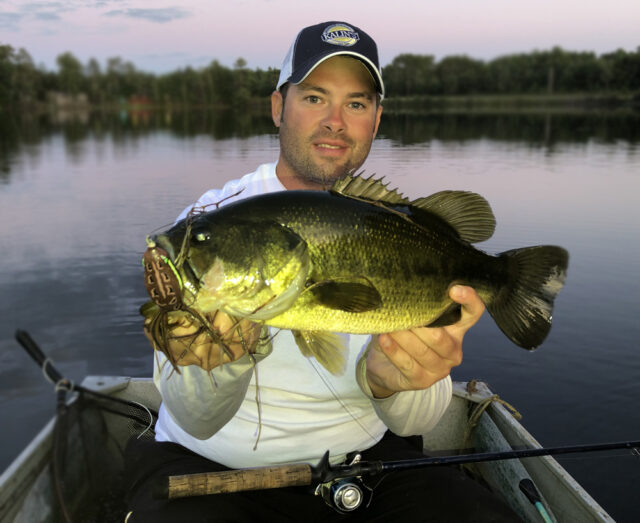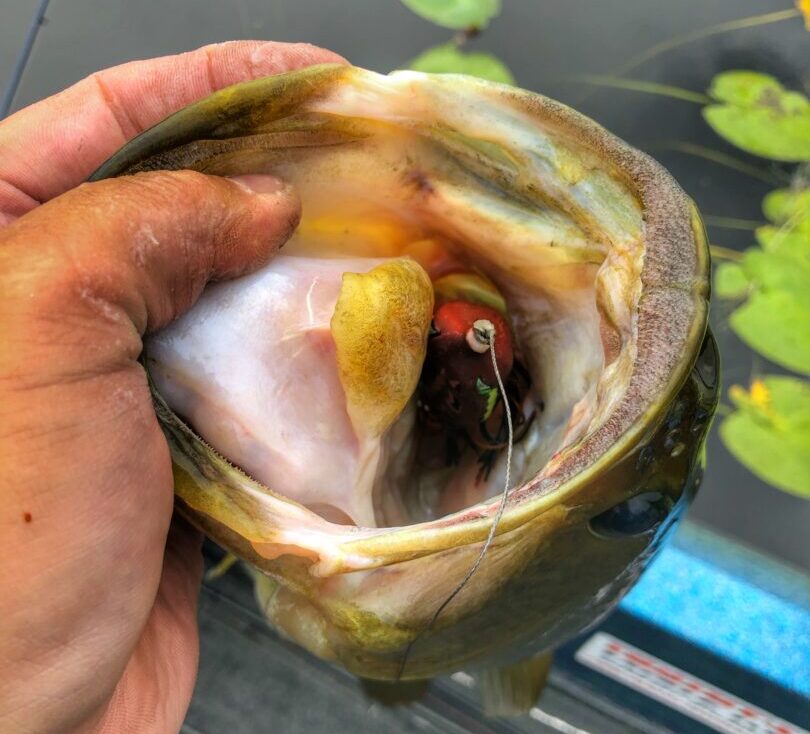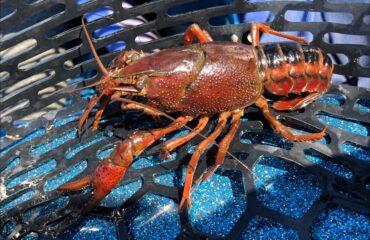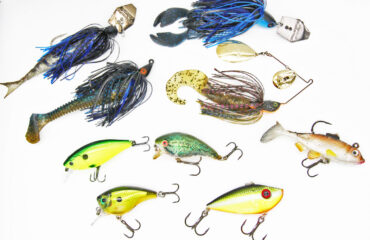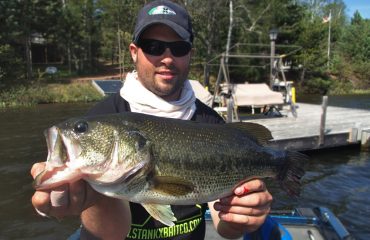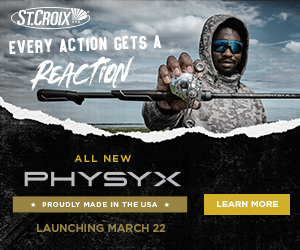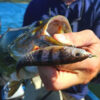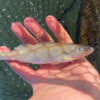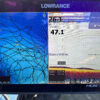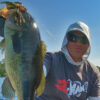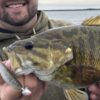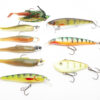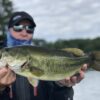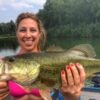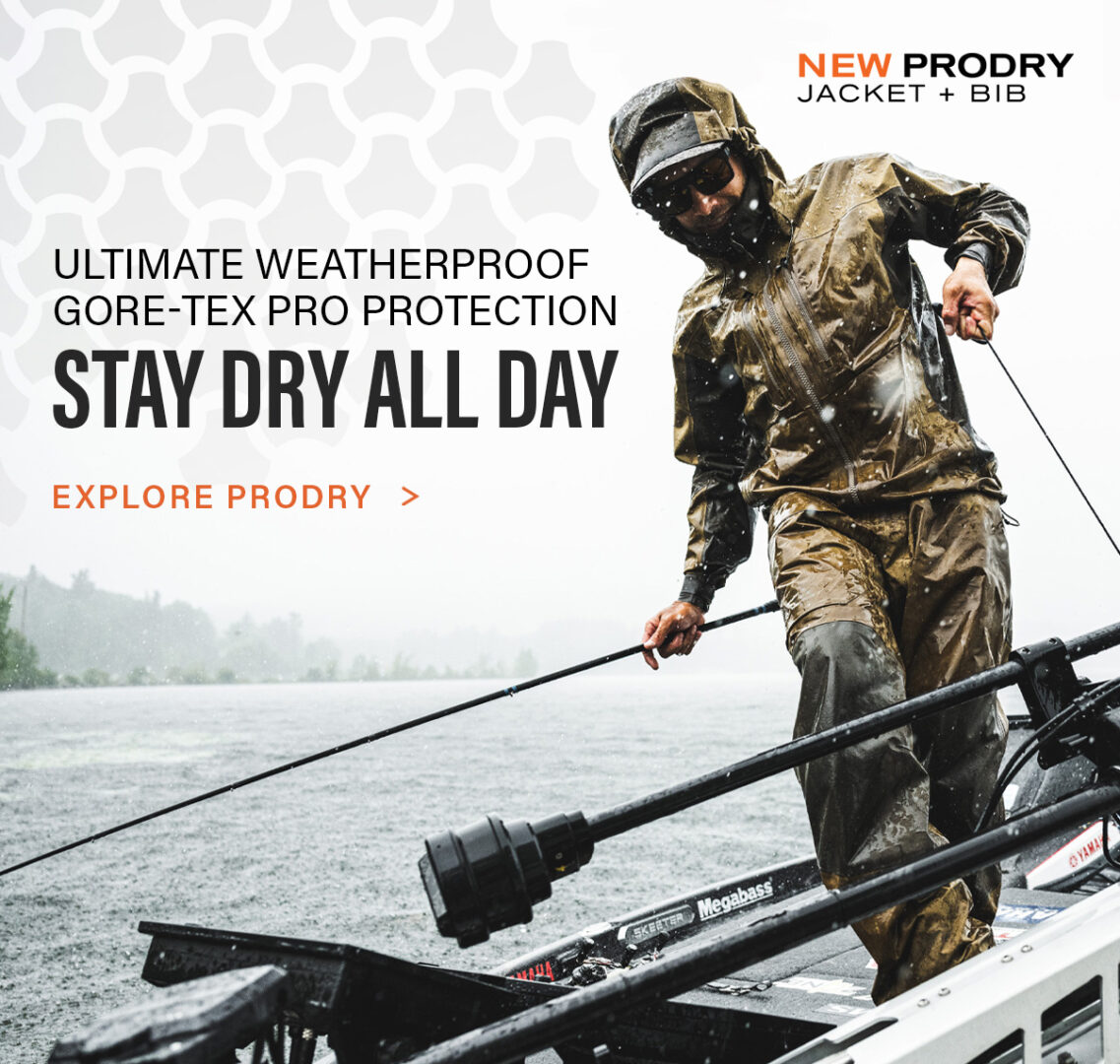Hey Ribbit! Ribbit! Ribbit!
Frogs are fantastic baits in heavy vegetation. Utilizing a surface-running soft plastic frog around lily pads and atop mats of slop is exhilarating as bass come out of the water to engulf the lure. The distinctive feature of frogs is that their hooks and riggings are weedless and there are no protrusions or sharp angles that can pick up vegetation. The fact that frogs are weedless, enabling anglers to fish them where nearly all other lures might fail, is their greatest advantage. In addition, their soft bodies are hollow and natural to the touch; allowing bass to hang on to the lure while anglers react to powerfully set the hook.
There are several different types of frogs on the market today. The surface frogs produced by tackle manufacturers are classified under two different groupings: hollow body and soft plastic.
Molded Hollow Body Frogs
A hollow body frog is molded with either single or double hooks featuring silicone tails, and can be fished in both heavy vegetation and in certain open water situations. They are best fished by matching the hatch, and imitating the natural motion of how real frogs swim through the water, most often with fast short hops and long pauses. Frogs are more apt to pause against lily pads or other floating debris than just stopping and floating in open water. Thus it is important to observe the behavior of live frogs and trying to imitate them. Some popular hard plastic frogs are made by Snagproof, Sumo, Scumfrog, River2Sea, and Spro.
Soft Plastic Frogs
Soft plastic style frogs are much more suited for open water and low vegetation applications. In these situations soft plastic frogs are best fished like buzz baits, and rigged weedless with a Texas rig. Some float and sink, while others can be buzzed and used to cover large expanses of water and search for numbers of fish. Some popular soft plastic styled frogs are Zoom Horny Toads, Sizmic Toads, Strike King’s Rage Tail, Stanley’s Ribbit, Stankx Bait Company Buzz Frogz, and the YUM Buzz Frog.
Popular frog colors are those that match the hatch according to the frogs present near the water being fished. Black and white are most common frog colors, while brown, green, chartreuse, and other natural colors work exceedingly well.
Nowadays, more and more natural looking finishes are gaining popularity and seem to be catching more fish.
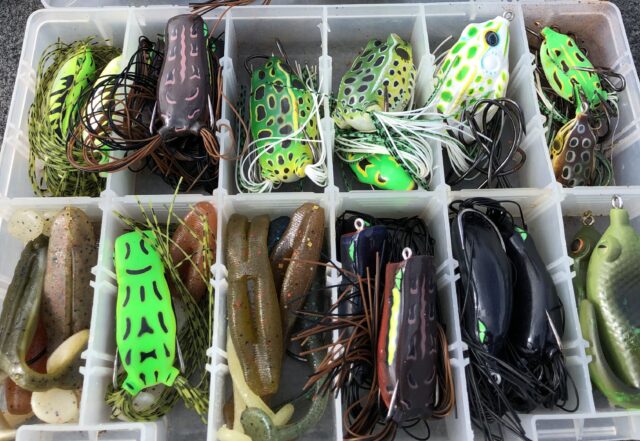
When and Where
Starting in late May as water temperatures reach the 60 degree range, frog fishing is already in full swing throughout much of the Midwest. Fishing stays productive throughout all of summer and lasts up until the middle of September once water temperatures begin cooling in preparation for the fall.
Usually from midday to dusk and into the early nighttime is when frog fishing is at its peak. However, I have had success during dawn and early morning hours too, and some of my best and preferred fishing takes place on calm, humid days when there is a lack of wind, or rain showers are in the forecast.
Frog fishing usually leads you and your boat into some pretty awful places that are generally inaccessible with the outboard motor. Typical frog water would be the shallow backwaters and bays of lakes and large grassy areas, especially with surface moss and algae growing on top. Other good water includes sparse grass, lily pads, overhanging trees and timber, and the dead ends of coves where emergent vegetation and debris has accumulated.
One important observation to make is that if bass elect to stay shallow during the daytime, it is critical to pay attention to the surroundings and the near-water feeding habits of other animals. Look for weed pockets and openings in the slop, pay attention to the activity of birds, bees, dragonflies, and listen for bluegills popping the surface. I cannot tell you how many times I have had bullfrogs follow my frog lure back to the boat. Watch them if they are following you back and suddenly stop. It is for a reason; that frog knows that a big bass is lurking nearby.
Likewise it is important to note that in order for frog fishing to be a success, there needs to be a sufficient depth of water under the cover, and access to deeper water so that fish can have a sanctuary to seek protective cover. Adequate frog water must be more than a foot deep but always less than 8 ft. deep.
Most anglers tend to wait until the hottest days of summer, when bass will be looking for cooler and shaded water in the mats, to begin throwing the surface frog. However, bass utilize shallow cover at any time of the year, depending on latitude. The point being is that anglers should not neglect the opportunity to fish with frogs, regardless of season, and neither should anyone have to wait until the dog days of summer to begin fishing this way. For me at least it seems as if bass are always in shallow water looking for cover and waiting for a meal to pass by.
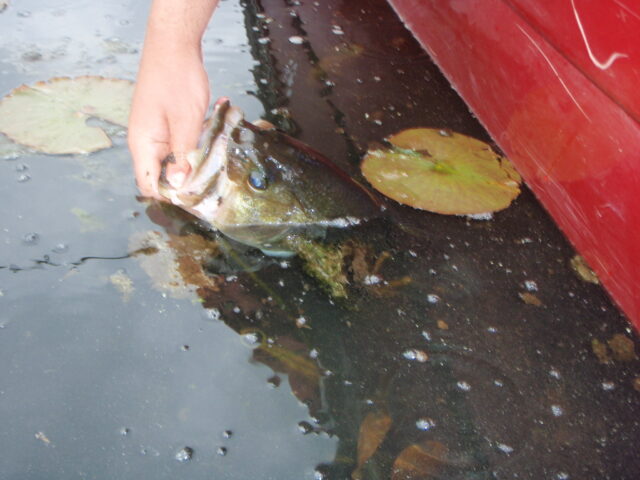
Frog Baits
Largemouths see and feel disturbances on vegetation mats overhead. They are drawn to the movements. Like many anglers, I rely heavily on an assortment of weedless surface frogs to walk and pop across the tops. They are underrated search lures. My favorite frog is a Vexan Fishing Ninja Frog. These are available in popper and swimmer versions. They’re durably built, heavy and wide, push a lot of water and create a wild ruckus atop the surface.
Additionally, I work an assortment of other hollow body frogs that also includes Kalin’s Google Eye Lily Stalker and Popping Frogs. These two feature a glass rattle system pegged into the eyes, which can help for noise-making. Another worthy brand is American Baitworks wide assortment of Scum Frogs and Snag-Proof frogs. The Snag Proof Perfect Frog has a wide body, pushing substantially more water than all the others.
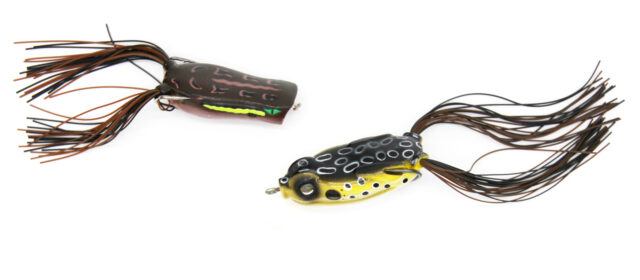
Popper frogs are worked through pockets and openings, and along the edges. They also walk-the-dog nicely. Swimming frogs are crawled atop pads and over everywhere.
In sparser slop, or when largemouths are very aggressive, softbait frogs and toads will further allow greater coverage of the area and enable you to fish fast. Only drawback is all the missed strikes and blowups they’ll promote, requiring a constant, fast retrieve across the surface. Some options to consider are Z-Man Goat ToadZ, Zoom Horny Toads, Kalin’s Sizmic Toads, and formerly Stankx Bait Co’s buzz frogs. Rig each weightless to a Trokar TK160 (3/0) Magnum Swimbait Hook or TK110 EWG.
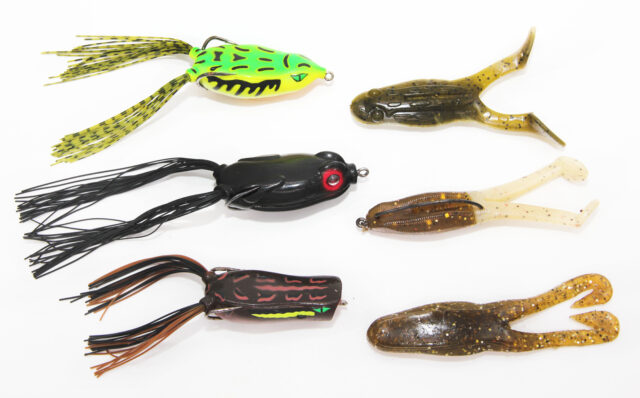
For frog fishing, you’ll want a heavy-fast action set-up with a softer tip. The St. Croix Victory Full Contact (VTC74HF) and Legend Tournament Bass Slop-N-Frog (LTBC74HF) fish masterfully. You’ll want to accompany them with a high-speed reel spooled with 50 lb. Cortland Silent Flip. This braided line is kind to the rod guides, slices through vegetation, and silent on the hook-set.
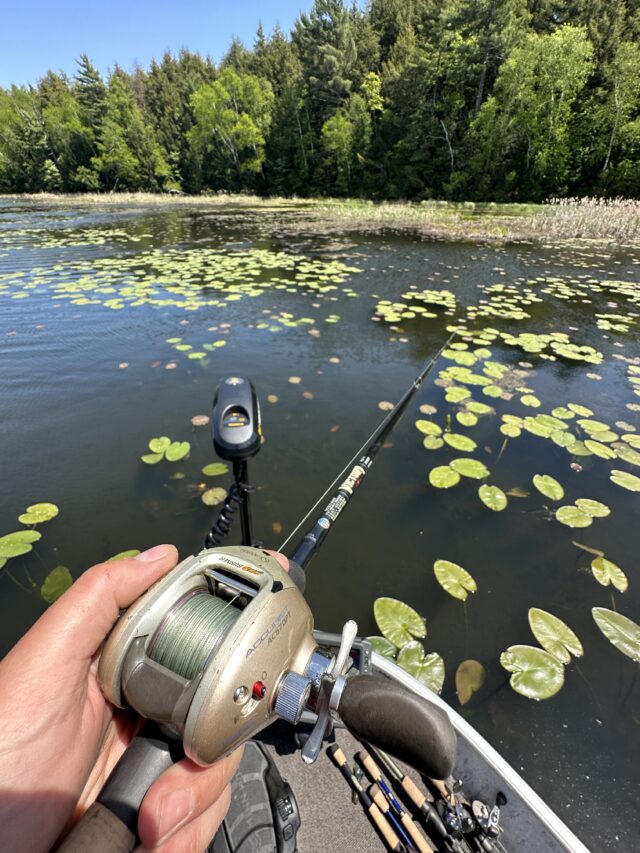
As with all frogs and surface lures, setting the hook promptly on a splash result in swing and misses. Be patient, waiting an extra second or two longer. Always set when you feel the weight.
